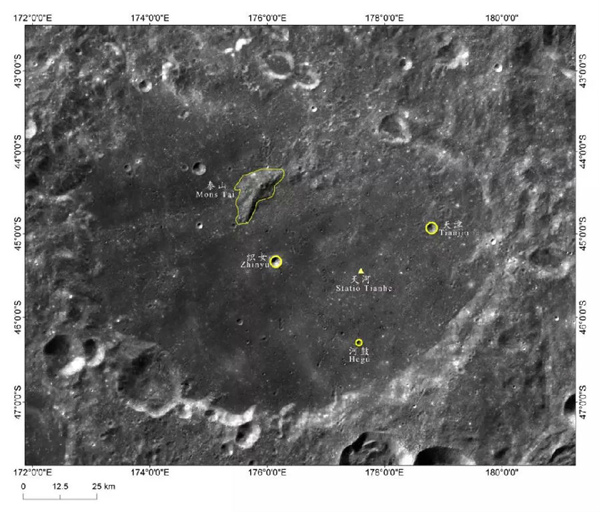Chang'e-4's Discovery Unveils Moon's Evolving Model
A Chinese research team has proved that the soil of the landing area of the Chang'e-4 probe contains olivine and pyroxene which came from the moon's deep interior, the National Astronomical Observatories of CAS announced on May 16.
The discovery, titled Chang'e-4 initial spectroscopic identification of lunar far-side mantle-derived materials, was published online in the latest issue of the international academic journal Nature.
It offers direct evidence of lunar mantle composition that confused scientists around the world for a long time and will contribute to the evolving model of the formation of the moon.
Generally developed by China Aerospace Science and Technology Corporation, the Chang'e-4 probe landed at the Von Karman crater on the far side of the moon on Jan 3 this year.
Later, Yutu-2 separated from Chang'e-4 and obtained high-quality spectroscopic data of two probe points with an infrared spectrometer.
Through these data, researchers found that the absorption features of the lunar soil spectrum in the landing area is different from that of the near side of the moon.
The soil of the far side contains more olivine and pyroxene that might also be found in the moon's deep interior.
According to the high resolution remote sensing image and hyperspectral data, soil samples Chang'e-4 collected originated from the Finsen crater. The crater was formed because of the crash of a small celestial body into the South Pole - the Aitken Basin (SPA), which is on the far side of the moon.
The data collected by Chang'e-4 confirms the theory that the lunar mantle composition is rich in olivine.

An image of Tianhe Base, Chang'e-4's landing area on the far side of the moon.[Photo/sasac.gov.cn]
(Executive editor: Li Shuling)



